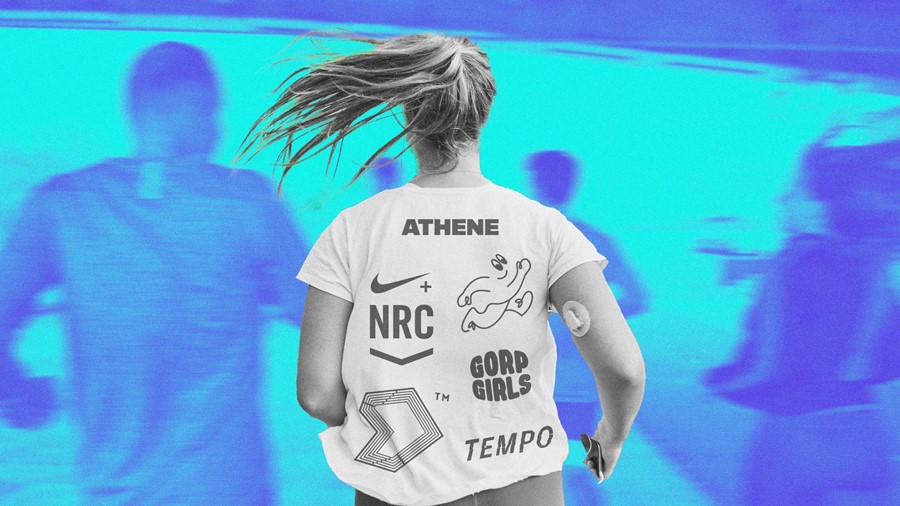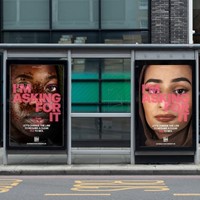Run clubs are now everywhere, with record numbers of young people taking to the streets – but what’s behind the sudden uptick?
It’s a Saturday morning. I’m walking through London’s Victoria Park, enjoying a pastry. I’m hungover, I’m breathing in the crisp winter air, my life is a movie.
Sadly, this brief moment of bliss has been snatched away more than once, when I’m rushed by hoardes of Hoka-wearing, technical outerwear-adorned runners. I’d be able to deal with the peacocking of run club members usually, burying my deep-rooted resentment of cardio under the distraction of my seven quid Vegemite scroll. But with their numbers now higher than ever, it’s becoming increasingly difficult to ignore.
In 2024, we are reaching fever-pitch levels of run-mania. According to Strava, women under 25 are reportedly the fastest-growing community on the app, and the most likely age group to be tracking their runs. Hoka, the en-vogue running brand, continues to have record-breaking revenue year on year globally, while Google Trends shows that the term ‘run club’ has been steadily growing in searches in the UK over the last five years. In the US, the Chicago marathon this year will have a record number of runners at 50,000 participants after 120,000 applications, and in the UK, the Hackney Half Marathon had more participants than ever in 2023, and is already sold out for this year. This renewed popularity begs the question: what is everyone running from?
Comedian Catherine Cohen in her star-making Netflix special The Twist, She’s Gorgeous sings about this question, proclaiming: “Running a marathon is clinically insane” and “when you tell me that you’re running 26 point two, it makes me think that you’re burying years of inherited trauma”. I agree with Catherine – from an outsider’s perspective, there’s something that seems masochistic about training for and running in a marathon, with no previous running experience. I question whether runners are robbing themselves of the joys of literally anything else by choosing to hurl themselves around London chasing some meaningless end line. I also question if I’m projecting my insecurities onto people merely exercising. I write this article desperately trying to prove the former.
Emily, 25, picked up running after a break-up last year and has found it incredibly rewarding. She’s currently training for her first half marathon. “It definitely seems like more people have been running in the last six months or so,” she tells me. However, she admits to hating the “macho” culture of certain run clubs. “We were running down Southbank at one and it was just [a big group of] massive guys whooping and hollering to hype the run club up. It was awful.”
Fellow runner Axl, 29, agrees that these clubs can be testosterone-heavy (“lots of run clubs seem very bro-ey”). However, he says that he sees running as his “third place”. “If I’m running, say for example in Clissold Park, I could run past someone I know and not even notice that they’re there,” he explains. “In my brain I’m at the Lady Gaga Monster Ball Tour in 2010.”
@panarunclub First run of the year. Follow our instagram @panarunclub to stay up-to-date with upcoming runs🏃🏾♂️🏃🏾♂️🏃🏾♂️ See you all Thursday! Bring your thermals ❄️ #running #runtok #london #runninglondon #londonrunner #runningtips #runclub #communityrun #newrunner #runwithme #marathontraining #10krun #5krun #trending #fyp #foryou #foryourpage ♬ Swimming - Flawed Mangoes
The image of straight men hollering down Southbank on a weeknight run club is enough to make me question leaving the UK for good – but this obnoxious masculinity is, at least partly, woven into the history of run clubs. “In Paris in 1903, after the boom of the first Olympic marathon, a series of races were run for particular professions,” explains Martin Humcombe, a researcher in Sports History at the University of Bristol. “They had a race just for bankers, transport workers, shop employees, [but] the most famous one was for women working in the fashion industry.” These women were the ‘Midinettes’, otherwise known as seamstresses. “All of them used to come out at lunchtime to run… usually young women, and they were a bit of an object of fascination from the press.” These women were perceived as sexually available, and one newspaper jumped onto the craze and decided to throw a race through Paris for the Midinettes, which ended up being one of the earliest recorded events of women running.
As 2,000 Paris fashion girlies descended upon the city, all of the young men flocked to the streets to fawn over them, and eventually started a riot. “These guys just got a bit over-excited,” says Humcombe. “A lot of them were chasing the women down the streets, on bikes, getting in their way, preventing them from running.” The Sunday fashion run club caused a scandal in the press – “not only [because] the women were out in the street, but because they got sweaty, which was seen as really quite repulsive”.
I scoff at these horny fin-de-siècle men, but deep down, I understand the attraction of seeing someone running. The sweat on their face, their body-hugging activewear, the annoying realisation that perhaps hot people run to stay hot. This real-world attraction seems to be seeping into run clubs in the modern day, perhaps in a more civilised manner, as “run clubs being the new hinge” makes the rounds on TikTok, and sliding into DMs becomes reality on Strava. Goodbye to the days when someone’s height was a dating deal-breaker; what does it mean now when that deal-breaker could be their pace?
@thekatieromero Run clubs are the new Hinge in NYC #running #runtok #runclub #nycdating #nyc ♬ Beyonce x My Husband x Casa Di Remix - CasaDi
Daisy, 28, started running six months ago after her partner joined the Amsterdam marathon out of the blue. “After questioning him for weeks on how and why and thinking he’d lost his mind, I decided to push all my traumatic high school PE experiences out of the way and join him for his runs,” she says. Daisy likes that running allows her to get out on foot and explore new places in London, and thinks that the rise in running could be as a result of the cost-of-living crisis and people opting out of work-outs they have to pay for. “I have more and more friends picking parks over pubs for meet-ups,” she says. “That, and the crazy cost of living in London, [means] people are starting to cancel their workout class for something free. At least that’s what I did.” Fiona Spotswood, Senior Lecturer and Researcher on Physical Activity at the University of Bristol, agrees: “The cost of living has a huge impact, people are running who formerly might have been gym members.” It makes sense: according to a 2022 study from the IHRSA, 25 per cent of all fitness facilities ended up closing during the pandemic.
Spotswood also mentions community being a major factor. “If you think about what happens when you go for a run with someone else, you’re not looking them in the eye,” she says. “It’s very levelling… you can open up in a way that’s really not threatening. Particularly with men who struggle to form connections… It enables you to form a gentle connection, it’s not like you have to be their best friend.”
When I started researching and interviewing for this piece, I felt like all of these fresh runners were just trying to distract themselves from the drudgery and doom of late capitalism. However, unfortunately, everyone I spoke to just really enjoyed running, and if not the actual act of it, the feeling of accomplishment they had afterwards. We’re lucky that for every macho, nightmarish run club in London, we have access to a lovely Queer Running Club, or a running club for new mums. While I am pro-Hinge, it’s nice that these maniacs have a new dating platform that also goes hand in hand with a healthy lifestyle.
Before finishing this, I decided to see what all the fuss was about, and tied up my sneakers to run on my lunch break, blasting “FTCU” by Nicki Minaj. It really was just an awful experience. Happy for you guys, though!




